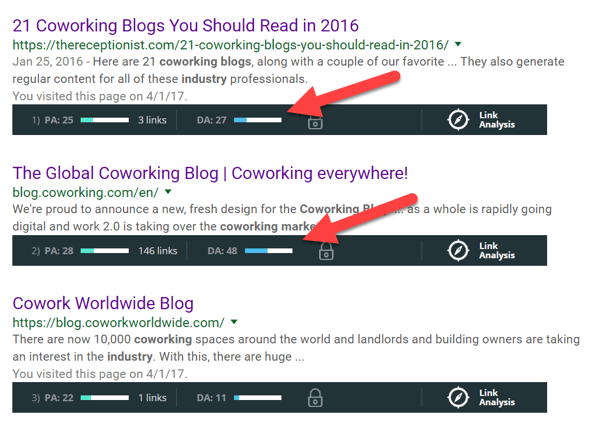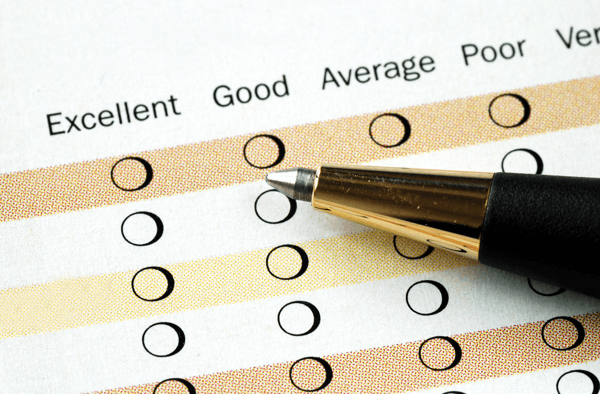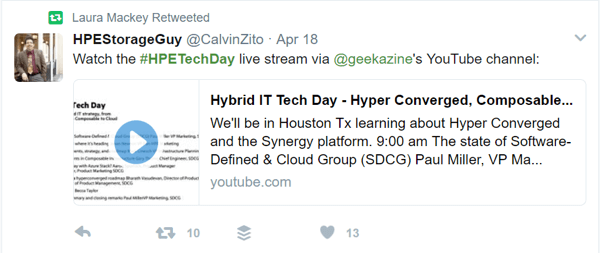 Wondering if social media influencers can increase your company’s reach?
Wondering if social media influencers can increase your company’s reach?
Looking for tips to find and evaluate potential influencers for a professional fit?
In this article, you’ll discover how all businesses, even B2Bs, can partner with influencers to elevate their messaging.

Influencer Marketing Can Work for B2B Companies
B2Bs often look at how consumer brands work with influencers to promote, evangelize, and sell products, and assume that if they pay influencers to promote their products or services, they'll invigorate the connection with their audience.
But that's not necessarily the case. The nature of the B2B sales cycle makes it difficult for this approach to work. The sales journey usually occurs over a long period (weeks or even months) and involves multiple stages and people. That's not to say influencer marketing can't work for B2Bs; you just need to approach it differently and strategically.
Third-party influencers who have a strong reputation can add a lot of value to B2B companies and help you with a variety of marketing activities. For example, they can help you increase brand awareness, boost media impressions, engage with ideal customers, and build your social media following.
Influencers can also help with your business goals such as getting in front of new customers, shortening sales cycles, making larger deals, increasing revenue, and fielding customer questions and complaints.

But here's the twist: If you want to make influencer marketing work for you, you need to play the long game. You must entice influencers with a strategy that builds brand ambassadors and long-term content partners. Here's how to do it.
#1: Identify Relevant Influencers in Your Niche
One of the biggest mistakes B2B companies make with influencer programs is selecting influencers based on their social media popularity. Contrary to what you might think, influence isn't about popularity; it's about finding industry voices that appeal to your audience, regardless of the size of their social media followings.
Identify Prospective Influencers
Rather than focusing on the most popular people in your niche, identify people who are influential with your buyers. Ask yourself, who do my customers listen to? Better yet, ask them whom they pay attention to and go to for help.
Make a list of speakers, industry experts, and thought leaders that your audience follows. Find out whom your employees follow and listen to. You might be surprised.
Let's say you're in the coworking industry and you want to find influencers in your space. To get started, do a simple Google search for articles about your topic. The search results below are for the phrase “coworking industry blogs.” Click on promising examples that come up under your search term.
Get World-Class Marketing Training — All Year Long!
Are you facing doubt, uncertainty, or overwhelm? The Social Media Marketing Society can help.
Each month, you’ll receive training from trusted marketing experts, covering everything from AI to organic social marketing. When you join, you’ll also get immediate access to:
- A library of 100+ marketing trainings
- A community of like-minded marketers
- Monthly online community meetups
- Relevant news and trends updates

Consider installing the MozBar to help you sort through the search results. It's a simple browser extension that helps evaluate the SEO authority of blogs. In general, the higher the domain authority (DA), the better. A high DA means the blog ranks well in the search engine and pulls up well in organic search.

To identify potential influencers, look for blogs or websites with a good DA. Blogs with a DA of 25 or higher command larger audiences (your ideal consumers), and they can provide more SEO benefit if they publish content about you and your brand and link to your site. In the example above, you can see two blogs with DAs of 27 and 48 respectively, both good candidates.
Don't disregard blogs with lower DA outright, though, especially if the quality of the content is good and you believe they'll continue to build an audience. Working with them before they become well-known could be a good opportunity.
Another way to find influencers is to do social research on the people that B2B marketers retweet and mention most often on Twitter or other social media channels. To find influencers on Twitter, type a relevant hashtag into the Twitter search bar at the top of the page. It's easiest to do this type of search on desktop.

In the search results, click the People tab, which is where you'll find influencers. Simply sift through the results and find candidates you think might be suited to your needs.
If you have trouble finding the right influencers using Google or Twitter, there are numerous other tools you can use such as BuzzSumo, NinjaOutreach, or Awario.

Assess Prospective Influencers on Your List
When assessing potential influencers you've identified, consider these three factors:
- Relevance: Is the influencer's content congruent with your brand and your products? Do they know and understand your industry? Their content will clue you in.
- Resonance: Does the influencer elicit a response from their audience? Do they get social shares, likes, comments, questions, and discussion? Does the influencer weigh in on the discussion and answer questions?
- Reach: Look at the aggregate audience size the influencer commands. This includes their blog, video channel, Twitter account, Facebook page, Instagram account, and so on.
Reach is the least important of the three measures above. The influencer's relevance and resonance are more important. In the B2B world, an influencer with a smaller but more focused audience is more valuable.
Here are some more qualitative ways to evaluate influencers:

Discover Proven Marketing Strategies and Tips
Want to go even deeper with your marketing? Check out the Social Media Marketing Podcast! Publishing weekly since 2012, the Social Media Marketing Podcast helps you navigate the constantly changing marketing jungle, with expert interviews from marketing pros.
But don’t let the name fool you. This show is about a lot more than just social media marketing. With over 600 episodes and millions of downloads each year, this show has been a trusted source for marketers for well over a decade.
- Do they publish consistently? Look for a frequency of at least once per month.
- Do they write quality blog posts and know their subject matter? If they post video, is it high quality?
- Do they seem to know their audience well and produce content that addresses their needs?
- Is the influencer's content focused, or all over the place? It's okay if they post about multiple topics, but look for at least 70% of their content to be focused on a specific topic.
- Are they connected to others in the business including other bloggers and consultants? If so, which people? Check their LinkedIn profile and Facebook page if they have one.
- What kind of “voice” does the influencer adopt in their writing or videos? Is their attitude abrasive, cynical, or sarcastic in tone? Do they like to “stir the pot” by being controversial?
- Do they use profanity? Profanity can be a turn-off to many consumers (and companies), so know this before contacting an influencer.

Remember, don't let an influencer's popularity affect your decision. Choose influencers who are knowledgeable and can sway your prospects and engage with them in a meaningful way. Keep in mind that they'll be communicating on your brand's behalf, so make sure what they stand for is in line with your company's market positioning.
#2: Get on Prospective Influencers' Radars
If you want to reap the benefits of influencer marketing, you need to play the long game. Focus on earning influencers' trust and building meaningful connections with them. Think of the process as building strategic content partners.
Developing an effective strategy requires more than just sending a casual email. Industry experts (influencers) are busy people, so they don't have time to respond to every request they receive. If you want to engage with them, you need to build bridges. Get on their radar and get them to notice you.
Share their content, write thoughtful comments on their blog posts, start a conversation with them on social media, and so on. But don't talk about your business or your products. Your goal is to build a relationship, not to make a sale. Make insightful observations and ask questions to let them know you're interested in them and their content.
Don't ask them to do something for you the minute you have their attention, however. Instead, find out if you can do something for them. That way, they'll see that they're not just a number to you and that you're focused on achieving something more meaningful than a simple retweet or blog post.

When you reach out to ask them to participate in a campaign, customize your approach and use their first name in your email. To turn them into long-term partners and brand advocates, treat them well and focus on their unique personalities. If you've successfully built a meaningful relationship, influencers might even offer to help without you having to ask for it.
#3: Carefully Vet Prospective B2B Influencers for Fit and Niche Fluency
B2B companies have to think differently about how they inform influencers about their company and products. You may not be able to simply send your product to them to review because the product is too expensive or it's not logistically possible. Also, many B2B products are complicated and require some education about how they're used by their intended market.
For these reasons, you'll need to meet with influencers. Fortunately, there's a number of ways for B2Bs to meet with influencers, including:
- If your company is participating in an industry event, check the attendee list for the event to see if any influencers you'd like to meet are going. If so, reach out to them and arrange a time to meet. Breakfast meetings are usually easiest to set up, or you can arrange to meet on the conference show floor at an appointed time and place.

- Invite influencers to attend a virtual briefing. Put together a compelling briefing deck about your company and product. Keep your presentation time limited and allow more time for the Q&A. The idea isn't only to educate, but also to start a conversation and solicit their feedback and ideas.
- Invite a group of 8-10 influencers to attend an exclusive event at your company. (Any fewer than eight might feel “thin” and any more could be cumbersome to manage.) Put together a robust, interesting agenda with multiple speakers, but don't overdo the PowerPoint presentations! Allow ample time for Q&A and conversation.
Meeting with influencers is key, but it's also important to stay in touch. Contact them on a regular basis and encourage them to reach out to you with ideas and observations. Consider briefing them every quarter and include them in any media briefings by your PR team. Influencers will likely appreciate access to that information.
Remember, influencers have a direct connection with your customers, so treat them well.
#4: Promote Influencer Content on Multiple Channels
To build a truly effective social media influencer marketing strategy, you need to provide value to influencers and their audiences.
It's not enough to simply ask an influencer to share some of your social media posts or publish content about your products. You need to go deeper and create content that meets the needs of your influencer's audience.

For example, to attract the attention of your target audience and build credibility, conduct an interview with an influencer and publish it on your blog. Even better, the influencer will likely want to highlight that post and share it aggressively.
Make the most of the power influencers hold over your audience. On your social media channels, share photos, social media posts, articles, and videos that influencers generate about your brand and products.

Be creative to get more out of the content generated by influencers. Create short, bite-sized videos with tips from influencers and share them with your audience. Tease your audience about the influencers you're working with by sharing previews from their interviews.
You can also post quotes from influencers on your product pages or your social media channels. In the video below, HP highlighted quotes from popular tech bloggers to promote one of their laptops.
https://www.youtube.com/watch?v=mU3CQsF2KXU&feature=youtu.be
Conclusion
Influencer marketing isn't a one-and-done deal. If you want to reap real benefits, you'll need to engage with experts and thought leaders constantly.
Publishing a post on LinkedIn every once in a while and scheduling a few social media posts each week won't bring the results you're expecting. You need to engage with people more frequently if you want to grow your B2B brand's visibility and increase the chances of building lasting relationships with influencers in your niche.
Set aside an hour or two every week to comment on posts, share content, and participate in social media discussions. By increasing your social media exposure, you can build trust not only with potential influencers, but with your audience as well.
What do you think? Has your B2B company worked with influencers? What tips can you offer for building relationships with influencers? Please share your thoughts in the comments below.
Attention Agency Owners, Brand Marketers, and Consultants

Introducing the Marketing Agency Show–our newest podcast designed to explore the struggles of agency marketers.
Join show host and agency owner, Brooke Sellas, as she interviews agency marketers and digs deep into their biggest challenges. Explore topics like navigating rough economic times, leveraging AI, service diversification, client acquisition, and much more.
Just pull up your favorite podcast app, search for Marketing Agency Show and start listening. Or click the button below for more information.

